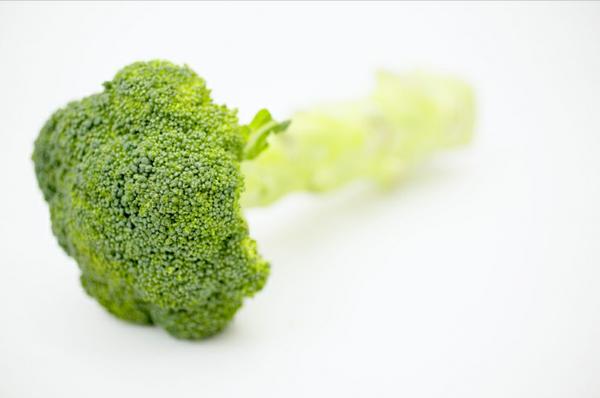High Blood Pressure and Magnesium
 Magnesium is not a mineral that tops discussions very often; however, magnesium is critical to over 300 bodily functions. Magnesium maintains normal muscle and nerve function, helps regulate blood sugar levels, promotes normal blood pressure and heart rhythm, maintains bone strength, and supports a healthy immune system.
Magnesium is not a mineral that tops discussions very often; however, magnesium is critical to over 300 bodily functions. Magnesium maintains normal muscle and nerve function, helps regulate blood sugar levels, promotes normal blood pressure and heart rhythm, maintains bone strength, and supports a healthy immune system.
Many people consume a diet low in magnesium receiving less than two-thirds of the recommended dietary allowance. Good magnesium sources include whole grains, spinach, broccoli, squash, beans, popcorn, nuts, pork, and seeds. Fair sources of magnesium include dairy products, chocolate, and meats.
A magnesium deficiency takes a long time to develop. Magnesium deficiency symptoms include irregular heartbeat, weakness, fatigue, numbness, muscle pain, disorientation, and seizures. Conditions related to increased risk for magnesium deficiency include alcoholism, poorly controlled diabetes, intestinal disorders (Crohn’s disease), and intake of certain medications (diuretics). Sup-optimal levels of magnesium intake have been linked with diabetes, hypertension, osteoporosis, and pregnancy discomfort.
When someone has type II diabetes they are making adequate insulin levels. The problem with type II diabetes is that the cells do not recognize the insulin. When cells do not recognize insulin they do not let sugar from the blood enter the cell and blood sugar levels remain elevated. This leads to sugar spilling over into the urine, organ damage, and other complications. Magnesium is a factor in this because it’s the “key” that opens the door for insulin to get into the cell. If magnesium levels are low there are no keys to open the door and insulin is unable to do its job resulting in continued high blood sugar levels. When diabetes is poorly controlled the loss of magnesium in the urine is even greater.
Blood levels of potassium, calcium, and magnesium are closely connected and all influence blood pressure. Studies have linked low magnesium levels with elevated blood pressure. As an aside, if you have ever been told to eat a banana by your doctor, you should also increase your magnesium intake. FYI – Bananas are not the best source of potassium – potatoes are!
Magnesium is a major component of the matrix (middle) of bones. Low magnesium levels cause fragile bones that are less flexible and have a slower recovery rate if injured.
Adequate levels of magnesium are related to decreased leg cramps during pregnancy. A magnesium deficiency is also a risk factor for gestational diabetes.
Recommended Dietary Allowances (RDA) for Magnesium:
Men 350 mg per day
Women 280 mg
Pregnancy 300 mg
Lactation 355 mg first 6 months; 340 mg next 6 months
You do NOT want to take megadoses of magnesium – more is not better in this case. You just want enough to meet the RDA. If you feel your intake of magnesium from foods is low, taking a basic multivitamin is a simple way to ensure you meet your needs. Read the multivitamin label carefully because not all multivitamins include magnesium. Always check with your doctor before altering your medications or supplements.
Magnesium may not be an exciting mineral, but it is critical. Ensure you are eating adequate sources of magnesium rich foods and/or consider a supplement to promote optimum health.
February is American Heart Month. In recognition of American Heart Month you can access Heart Health Made Easy at a 25% savings. Learn more about this take action guide to lower cholesterol and blood pressure at http://www.hearthealthmadeeasy.com.

Lower Cholesterol – Is grapefruit juice safe with medications, such as Lipitor?
 Here’s another question I asked Dr. Cynthia Shelby-Lane and her answer.
Here’s another question I asked Dr. Cynthia Shelby-Lane and her answer.
Lisa Nelson RD: Is it safe for individuals taking medication for heart disease, such as Lipitor, to eat grapefruit or drink grapefruit juice?
Dr. Shelby-Lane: I am including information that may help answer your question about grapefruit and a variety of nutritionals that affect statin drugs for the lowering of cholesterol.
Zocor (Simvastatin), for example, is a Statin drug, used to lower high cholesterol levels, and also known as HMG-CoA reductase inhibitor. Zocor may affect the absorption or utilization of vitamins E and coenzyme Q10. Tests showed the average concentration of coenzyme Q10 in blood plasma decreased by approximately 50% after statins were used for 30 days. Supplementation is considered beneficial.
Grapefruit and grapefruit juice may increase the effects of HMG-CoA reductase inhibitors and should not be consumed at the same time. It is suggested that these medications be taken with water. Grapefruit contains substances that may inhibit the body’s ability to break down statin drugs increasing the toxicity of the drug. Muscle pain, tenderness, or muscle weakness may be a result. If you begin to notice these symptoms, contact your doctor.
Niacin is the form of vitamin B3 used to lower cholesterol. Large amounts of niacin taken with a statin drug may cause serious muscle disorders (myopathy). Reasonable levels of niacin combined with statin drugs have been shown to enhance the cholesterol lowering effect. For proper dosage, consult your physician before taking niacin.
Pomegranate juice has been shown to inhibit the same enzyme inhibited by grapefruit juice. This may cause reactions similar to grapefruit juice when it is used with statin drug treatments.
A study of 37 people with high cholesterol treated with diet and statin drugs found vitamin A increased in the blood over two years of therapy. People taking statin drugs and vitamin A supplements should have blood levels of vitamin A monitored.
Magnesium and aluminum containing antacids were reported to interfere with statin drug absorption. To avoid this interaction, take statin drugs two hours before or after any aluminum/magnesium containing antacids. Some magnesium supplements such as magnesium hydroxide are also antacids.
It should be noted that doctors often recommend supplementing with 100 mg of coenzyme Q10 per day for maintaining healthy levels. However, those on statin drugs may have a greater need for a higher dose. It further should be noted that the symptoms associated with the combination of grapefruit juice and statin drugs (muscle weakness and discomfort) are commonly reported as symptoms associated with CoQ10 depletions. Supplementation with coenzyme Q10 is strongly recommended.
The herbs Artichoke plant, Garlic and Plantain may decrease blood cholesterol levels, and therefore enhance the effects of Zocor. Consult with your pharmacist or physician before taking them.
All the best,
Lisa Nelson RD
Be Heart Healthy and Lose Weight
5 Heart Healthy Foods to Add to Your Diet Today
Here are five foods to include in your diet to promote heart health.
1. Banana – Good source of potassium to promote a lower blood pressure.
2. Fish – Contains omega 3’s to prevent arterial plaque rupture.
3. Olive oil – Contains heart healthy monounsaturated fat to reduce the risk or coronary heart disease.
4. Garlic – Contains allicin to raise HDL, lower LDL, lower homocysteine, and lower blood pressure.
5. Walnuts – Rich is essential fatty acids, healthy protein, fiber, and phytosterols (compounds to decrease absorption of dietary cholesterol).
February is American Heart Month. In recognition of American Heart Month you can access Heart Health Made Easy at a 25% savings. Learn more about this take action guide to lower cholesterol and blood pressure at http://www.hearthealthmadeeasy.com.
All the best,
Lisa Nelson RD
Be Heart Healthy and Lose Weight
How to Lower Diastolic Blood Pressure
I’m frequently asked how to lower diastolic (bottom number) blood pressure, so I wanted to give you some good tips to see results.
First of all, you need to have a solid foundation in place that supports a low blood pressure. If you’re not sure what this entails visit Natural Ways to Lower Blood Pressure.
It’s important that your potassium, calcium, and magnesium intakes are adequate. Studies show that potassium can reduce diastolic blood pressure 2.5 mmHg, calcium 1.5 mmHg, and magnesium 3.4 mmHg.
Don’t forget omega 3 fatty acids. Studies show that consuming fish for one meal everyday decreases diastolic blood pressure 3.0 mmHg. Fish oil supplements are also and option.
With any supplement or nutrient – don’t go overboard! More is not necessarily better.
All the best,
Lisa Nelson RD
https://lisanelsonrd.com
 |
Omega Q Plus supports:
|
9 Steps to Lower High Blood Pressure – Is your hypertension uncontrolled?
Today is World Heart Day, so I want to give nine steps that will lead to high blood pressure control and ultimately heart health!If you live with high blood pressure, you’re familiar with the side effects of anti-hypertensive medications. Fortunately, medications are not the only way to rein in high blood pressure.
Lifestyle plays a key role. By altering some choices you make, you can avoid or reduce the need for medications.
Here are 9 steps that will start you towards blood pressure control.
1. Put out the cigarette.
There is a significant blood pressure rise with every cigarette you smoke.
2. Pour out the liquor.
More than two drinks daily for men and one for women can elevate blood pressure. One drink is equal to 12 ounces of beer, 5 ounces of wine, or 1 ½ ounces of 80-proof distilled spirits.
3. Get off the couch.
Inactivity equals an increased heart rate. Increased heart rate means the heart must pump harder and exert more force on artery walls. Shoot for 30 minutes of activity 5 or more days each week. Get moving!
4. Chill out.
Do you turn to cigarettes, alcohol, or food to cope with stress? If so, find a new method ASAP. Possibilities include meditating, taking a bubble bath, going for a long walk – whatever works for you.
5. Do NOT chew the fat.
Reduce saturated fat intake (i.e. trim visible fat off meat, switch to low fat milk). Replace saturated fats (such as shortening, butter, and ice cream) with unsaturated fats (such as canola oil, margarine, and low fat yogurt).
6. Use fatty acids.
Become omega 3 savvy and consume omega 3 fatty acids everyday (i.e. salmon, walnuts, canola oil, herring, and avocados).
7. Stop shaking the salt.
Taste your food before salting it! Read food labels to limit sodium intake to 2300 milligrams per day. Most Americans consume 6-18 grams daily. Pull out herbs and spices in place of the salt shaker.
8. Rake in the roughage.
Make whole grain products, fruits, and vegetables your friends. The more the merrier. A high fiber diet is necessary for heart health. You need 25-35 grams of dietary fiber daily. A fruit serving generally provides 2-4 grams of fiber, whole grain pasta 5 grams, and you can find 100% whole wheat bread with 5 grams.
9. Know your minerals.
Three minerals play critical roles in blood pressure management – potassium, magnesium, and calcium.
Potassium
If you are treating high blood pressure with a diuretic, you are excreting potassium. Two of the best potassium sources are potatoes and bananas.
Magnesium
As you switch from refined grains to whole grains your magnesium intake will increase. Magnesium is lost when grains are refined (bran and germ removed). Also, diuretics have the same effect on magnesium as they do potassium.
Calcium
Get your 3 a day. You need 3 servings of low fat dairy everyday. High fat dairy does not have the same protective effect when combating high blood pressure. One dairy serving is equal to 8 oz. of milk, 8 oz. yogurt, 1-1/2 oz cheese, and 1/2 cup cottage cheese.
For further guidance, access the free ecourse “7 Natural Ways to Lower Blood Pressure” at http://lowerbloodpressurewithlisa.com.



